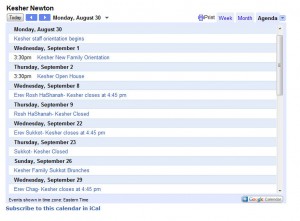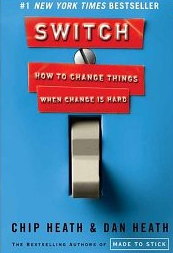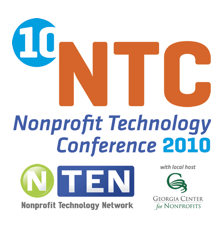 This post is part of Jewels of Elul which celebrates the Jewish tradition to dedicate the 29 days of the month of Elul to growth and discovery in preparation for the coming high holy days. This year the program is benefiting Beit T’shuvah, a residential addiction treatment center in Los Angeles. You can subscribe on Jewels of Elul to receive inspirational reflections from public figures each day of the month. You dont have to be on the blog tour to write a blog post on The Art of Beginning… Again. We invite everyone to post this month (August 11th – September 8th) with Jewels of Elul to grow and learn.
This post is part of Jewels of Elul which celebrates the Jewish tradition to dedicate the 29 days of the month of Elul to growth and discovery in preparation for the coming high holy days. This year the program is benefiting Beit T’shuvah, a residential addiction treatment center in Los Angeles. You can subscribe on Jewels of Elul to receive inspirational reflections from public figures each day of the month. You dont have to be on the blog tour to write a blog post on The Art of Beginning… Again. We invite everyone to post this month (August 11th – September 8th) with Jewels of Elul to grow and learn.
This is the age of perpetual beta. New features, tools and applications are being developed at such a rapid pace, that it’s more efficient to adopt a rapid & agile approach to development and implementation than to try to perfect it before going live. You might notice that Gmail and Flickr are still noted as “beta”.
Today things move quickly, and being agile and nimble is more important than being perfect. The consequence, however, is that without a defined end point or beginning, we might forget to pause and reflect, or to fully embrace a new beginning. When we’re constantly evolving, and continually focused on what’s next, do we lose the opportunity to get the most out of this moment, and what we’ve accomplished? It’s always hard to carve out the time for reflection, but every time I do it, I am reminded that it’s worth its weight in gold. Looking backwards in an age of constant innovation might seem counter-intuitive, but it is critical for future success, happiness and improvement. This is true whether it’s a new release of some widget or gadget, or a birthday, or Rosh Hashanah.
The cycle of the Jewish year is important not only for giving us reason to stop and reflect, but also for giving us a reference point for that reflection. I often remember my thoughts, feelings, regrets, hopes and thankfulness of last year, or the year before at Rosh Hashanah. The intensity of the holidays, the unique feeling of walking into the synagogue on that day, and even the words and tunes of the prayers evoke those memories that were etched into my being a year, or two, or three ago. The power of the day is not in what I’m thinking or feel at that moment, but how much has changed over time.
I once read a book, Managing Transitions, about how organizations and people navigate change. The take-home message for me was that change is situational, like a light switch. You close a factory, you require your staff to use a new database system, or the calendar tips from 5770 to 5771. But transition is psychological, and is a process. If we only see the change, and don’t engage in the transition, has anything really changed? If we are truly going to embark on a new beginning, we must take the time to close one chapter before we can transition into the next phase.
I’ve always been fascinated by the word “beginning”. Seemingly a noun, the “ing” gives it this little boost of a verb’s energy. Maybe it’s just a noun in perpetual beta.

 There’s a good thing cooking on September 15th. It’s the third annual
There’s a good thing cooking on September 15th. It’s the third annual 
 The campaign is fascinating for its viral success. This chart from Visible Measures shows it’s relative success compared with President Obama’s victory speech, the video of President Bush’s dodging of a thrown shoe, and Susan Boyle’s surprising vocal performance on TV, all major viral hits.
The campaign is fascinating for its viral success. This chart from Visible Measures shows it’s relative success compared with President Obama’s victory speech, the video of President Bush’s dodging of a thrown shoe, and Susan Boyle’s surprising vocal performance on TV, all major viral hits.
 I am currently re-reading
I am currently re-reading 
 This afternoon we’re convening the first ever faith-based affinity group at the NTEN Conference here in Atlanta. On Saturday, we’re hosting a panel with speakers from the Christian and Muslim communities to share how social media is influencing their work and communities. This afternoon, we’ll be addressing the following four questions. Add your voice to the mix, by commenting on this post, or tweeting your thoughts using the hashtag #10ntc.faith
This afternoon we’re convening the first ever faith-based affinity group at the NTEN Conference here in Atlanta. On Saturday, we’re hosting a panel with speakers from the Christian and Muslim communities to share how social media is influencing their work and communities. This afternoon, we’ll be addressing the following four questions. Add your voice to the mix, by commenting on this post, or tweeting your thoughts using the hashtag #10ntc.faith